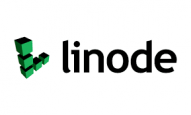Linode believes that in order to accelerate invention in the pall, virtual computing must be more accessible, affordable, and simple. Our structure-as-a-service platform is stationed across 11 global requests from our data centers around the world and is supported by our Coming Generation Network, advanced APIs, comprehensive services, and vast library of educational coffers. Linode products, services, and people enable inventors and businesses to make, emplace, and scale operations more fluently and bring-effectively in the pall.
Why Developers Trust Linode
For nearly two decades, inventors continue to calculate on Linode cloud structure to make and host their operations and data.
Inventors know that pall computing is all that we do. We do n’t operate accessories in requests that contend with our guests.
Inventors admire our commitment to the inventor community. We do n’t make products that contend with the products they ’ve erected.
Developers appreciate our longstanding belief in translucency. We do n’t cloak our products or pricing in complexity.
Inventors embrace our independence. We ’ve proven time and again that a successful company can be erected grounded on the requirements of its guests rather of investors.
Linode is the pall provider inventors trust because we give them an volition to the expensive, complex, and competitive choices they presently have in the request.
G2 Ratings2
Linode Ranked# 1 Structure as a Service Provider (IaaS) by G2
The Cloud Computing Market
Cloud structure services are the swift- growing member of the mammoth$ 332 billion pall computing assiduity. The public pall (IaaS) member is growing at 25 time over time and is anticipated to reach$ 122 billion by 2022.
The pall has unnaturally changed how we work, live, and play. Its network of remote waiters store, manage, and process data to help individualities, companies, governments, and other associations reduce the cost and complexity of retaining and operating their own capital and resource-ferocious computers. With the pall, data and operations are more accessible to further people wherever they’re connected to the Internet.
Pall Retrospective
This abecedarian shift in how business and society interacted with computers began in 1999 whenSalesforce.com started the Software as a Service (SaaS) revolution. By moving calculating power into the pall, large capital expenses, spanning limitations, and data attainability came part of calculating’s history book. The newfound capability to virtualize tackle allowed people to pay as they went, gauge up and gauge down at will, and manage their structure without the need for deep networking and IT moxie.
Salesforce abused the power of the pall to disrupt the$3.3 billion CRM software request and come one of the most important software companies in the world. Companies like Amazon used the pall to disrupt retail commerce, ever changing the world’s profitable geography. Moment, we take the pall for granted.
But back also, erecting your own pall was precious. It needed massive quantities of investment. Salesforce raised$64.4 million when it was first starting out. The same went for Amazon and other early pall adopters. To get the cost and scale benefits the pall handed, companies demanded deep pockets and indeed deeper technological know how.
Linux and Linode
What the assiduity demanded was a way to make this new computing power accessible to others. While Salesforce, Amazon, and others were erecting their own pall surroundings, the now-ubiquitous Linux open source operating system was claiming its place as the predominant garçon software in the request.
Jeff Dike, an active Linux contributor, had developed a technology called Stoner-mode Linux. UML allowed inventors to produce virtual Linux machines within a Linux computer. It was groundbreaking technology and opened the door for the virtualized pall we know moment.
One of those inventors was a youthful technologist, Christopher Aker. He saw an occasion to use Dike’s hypervisor technology not to make the coming Salesforce or Amazon, but to make pall calculating less complicated, less precious, and more accessible to every inventor anyhow of where they were located, what their coffers were or who they worked for. The company he erected — Linode — innovated pall computing and, heavily told by the open source movement it was born from, remains driven not by profit, but by a larger charge to homogenize pall computing by empowering inventors and helping the world introduce.
That charge and belief system — to make effects more affordable and accessible to everyone — came the commercial DNA of Linode. Aker knew that certain guiding principles were demanded to stay true to that charge. The first was that inventor control was consummate, which meant the company had to be erected on open norms with a guarantee of”no seller cinch-in”. The second was that it had to be client centric, free to make opinions in the stylish interests of its guests and not outside investors or shareholders.
Linode Today
Two decades latterly, Linode is the largest independent open pall provider in the world with 11 global data centers serving nearly a million guests and businesses around the globe. Linode’s charge remains unchanged since the day it began to accelerate invention by making pall calculating simple, affordable, and accessible to all. Throughout its history, the bootstrapped company has designedly rebuffed the temptation of outside investment, creating a company that reflects the advanced social calling of the open source movement and freeing it to always put its guests first in every decision it makes.
Accelerating Innovation
Linode’s people are some of the smartest in the assiduity. Just as it did when introducing pall computing in 2003, Linode continues to play a significant part in the technological advancement of pall computing.
Who Linode Sells To
Linode started as a company erected by inventors for inventors. Moment, it continues to serve these new originators, as well as the growing brigades, startups, and larger enterprises it’s helped to produce.
